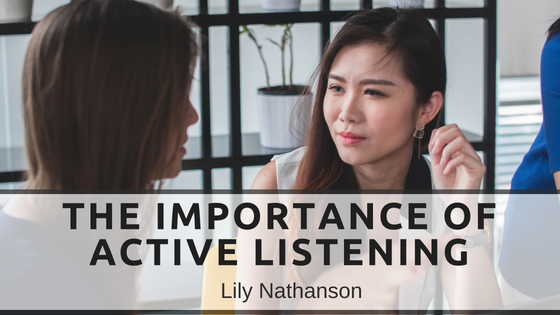Active listening is a tool that helps increase communication between a speaker and a listener, and it is something everyone should learn. It’s a technique that involves listening with your eyes as well as your ears. It is the opposite of passive listening, which doesn’t take much effort to engage in at all.
Active listening is extremely helpful in business. It helps build rapport and shows that someone is truly paying attention. If a client is talked over or ignored during a sales pitch, it can make them feel invisible or invalidated. However, by using active listening, salespeople can show that they value a prospective client’s needs and opinions and can build a trusting relationship.
Everyone, especially in business, should spend twice as much time listening as they do talking. Prospective clients will inevitably drop clues about what they’re thinking and feeling, either about you or your product or service. This is exactly the type of information you need to close a sale, so paying attention can make your job a lot easier. Also, you will be showing the client that you respect them.
There are several steps involved in being a good active listener. It’s important to pay attention without thinking about what you’re going to say next. It’s essential to show gestures that indicate listening, such as nodding your head and making eye contact. Ask open-ended questions to elicit more information. A good tip is to ask specific questions and then watch the speaker’s body language; this gives an idea of their emotional state and any underlying meanings. Since body language can make up over 80% of what people say, an active listener knows to pay close attention to the way someone is behaving, as well as their choice of words or tone of voice. Lastly, when it is your turn to speak, it’s essential to repeat and paraphrase the speaker’s own ideas to show that you understood them correctly.
One of the most common problems with active listening is self-control. The speaker will say something interesting, and you’ll suddenly want to jump in. You might even start to drift away, thinking about your reply. Losing focus means you’re no longer listening to what the speaker is saying. One way to stay on track is to be an echo, just repeating in your head everything the speaker is saying.
Once the speaker is done talking, it’s time to briefly summarize what they just said. This achieves several things: it shows the speaker you were listening to them, it draws out more details from them as they hear you speak, and it gives them a chance to correct any miscommunication right away. Overall, it’s a great way to customize your pitch for a specific client. Putting the focus on the speaker instead of just waiting for your turn to speak will help in all stages of a sales cycle.
If you do have comments or questions, it’s always a good idea to present them in a non-confrontational way. For example, if a client is upset because their delivery is a week away, a good response might be: “I understand that having to wait for your delivery can be frustrating, but we have a strict inspection process that we adhere to in order to give you top-quality products.”
The best (and most difficult) time to engage in active listening is when you’re at the objection stage of a sales cycle or any conversation. The fact that someone is bringing up a concern is really a great chance to alleviate a situation. Prospective and existing clients might offer useful criticisms at any time that can be used to identify exactly how to make them happy, so it’s important to be receptive when they do.

